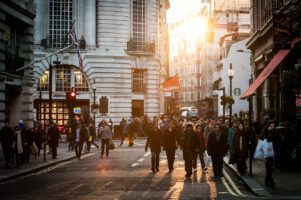Around 99.9% of the spatial-visual information from our interaction with the environment is processed in the background of our consciousness and stored in our implicit memory. We therefore cannot see this information directly, even though it has a significant impact on our experience and behavior and largely determines our actions. However, as soon as we ask about the causes that underlie our interests and decisions, these become visible to us. By far the greatest learning potential for developing spatial-visual competence therefore lies hidden within ourselves. By asking ourselves questions from the observation process and searching for answers through the thinking and design process, we can make our implicit knowledge explicit. In this way, we actively promote our memory performance.
As soon as we open our eyes, we use the vivid sign structure of the environment for the process of cognition and understanding as well as for problem-solving and mediation. Nevertheless, we are rarely aware of this non-verbal communication process. If we want to bring something that is merely “felt” into our consciousness, we have to look for the reason for it and express it in a descriptive or verbal form. We achieve this by concretizing our point of view and expressing our own perspective on the event. The complexity of our sensory spectrum that we actually experience is thus reduced to what is essential for us. Our vivid knowledge is formed from the concretization of sensory experience.
By visualizing the reasons for intuitive actions, spontaneous decisions, emotional reactions or creative processes, we can harness the information potential of our background consciousness. Motivations can be found for almost every action and decision paths can be traced. In this way, we learn to understand the background to our experiences and behavior. If, on the other hand, we do not ask or are not asked for what purpose something shows itself, how it shows itself, who or what shows itself to us, where or when it shows itself to us or to whom or what it shows itself to, this information remains invisible to us.


